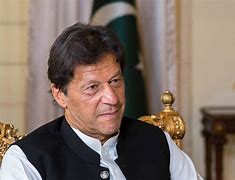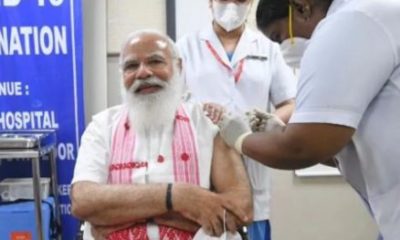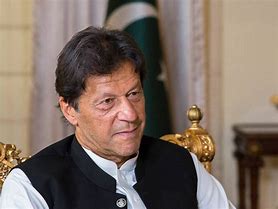Feature
Prabhu to present maiden rail budget tomorrow

New Delhi: Railway Minister Suresh Prabhu is set to present his maiden budget for the department Thursday amid expectations of a clear roadmap to re-energise one of the largest railroad networks in the world that’s been floundering in recent decades due to a mix of political populism, lack of vision and funds crunch.
The latest railway budget evokes particular interest as it comes six months after Prime Minister Narendra Modi’s government allowed 100 percent foreign equity in some big-ticket projects of the railways, promising it to be a game-changer for the 162-year-old network, that transports goods and passengers with an eye on social obligations.
Yet, one aspect of the budget is a foregone conclusion – there will be no lowering of fares. “It won’t be done. Fares are already low and government is giving subsidy,” Minister of State for Railways Manoj Sinha said a week ago, echoing what his senior minister has been maintaining all along.
An across-the-board hike has also been ruled out my some senior officials, given the near 15-percent increase in passenger fares and 6.5 percent in freight last year. So it will be interesting to watch how the railway ministry proposes to raise money, given the limitations of market borrowings.
Railway Minister Suresh Prabhu has also rejected the idea of a reduction in passenger fares consequent to the lowering of diesel prices following the steep decline in international crude oil rates.
Falling oil prices have saved billions of dollars in subsidy spending, but Finance Minister Arun Jaitley is under pressure to prevent the fiscal deficit from crossing the target of 3.6 percent of the gross domestic product (GDP).
Prabhu, a chartered-accountant-turned politician – handpicked by Modi to oversee the only ministry, other than finance, to present a separate budget – is also expected to chart the path for his political boss’s pet projects, notably bullet trains, dedicated freight corridors, as also foreign and domestic private equity participation.
A vision statement on utilisation of surplus land with Indian Railways is also much anticipated.
The latest rail budget comes at a time when its finances and efficiency are, perhaps, at their worst – as measured by a common parameter, the operating ratio. It suggests how much money is spent on day-to-day operations to earn the revenues, giving an indication of the funds left for safety and expansion.
This ratio for Indian Railways declined to an unsustainable level of over 95 percent in 2010-11 from around 80 percent in the 1950s. Globally, a figure of 75-80 percent or lower is what is seen as a healthy benchmark, but India ranks among the worst networks on this count.
One reason behind this is the successive changes in the political oversight of Rail Bhavan. The headquarters of Indian Railways has seen as many as seven ministers overseeing its operations in six years – Lalu Prasad, Mamata Banerjee, Dinesh Trivedi, Pawan Kumar Bansal, M. Mallikarjuna Kharge, D.V. Sadananda Gowda and now Prabhu.
A recent survey by an independent market research organisation also suggests that 74 percent of the people polled wanted better services, as opposed to more trains, and an overwhelming 78 percent were dissatisfied with the level of cleanliness, despite the Swacchh Bharat Abhiyan, or the clean India drive.
For the record, India boasts one of the oldest and the largest railroad networks in the world, ferrying some 23 million people, or a population the size of Australia, as also 2.65 million tonnes of goods on its coaches each day.
It serves from 7,172 stations via 12,617 passenger and 7,421 freight trains on a network stretching from Baramulla in the Himalayan foothills in Jammu and Kashmir to the southern tip of Kanyakumari in Tamil Nadu, and from Naharlagun in Arunachal Pradesh to the port town of Okha in Gujarat, just above Dwaraka, through some difficult terrain.
A day ahead of the railway budget, stocks of companies associated with the transporter turned volatile in Wednesday’s trade.
At the Bombay Stock Exchange (BSE), shares of wagon-maker Texmaco Rail and Engineering closed 2.90 percent down at Rs.139.20 from its previous close of Rs.143.35.
Stocks of another wagon manufacturer, Titagarh Wagons, declined in the day’s trade, ending 6.19 percent down at Rs.579.20 from its previous close of Rs.617.40.
Entertainment
Meghalaya Reserves Legalized Gambling and Sports Betting for Tourists

The State Scores Extra High on Gaming-Friendly Industry Index
Meghalaya scored 92.85 out of 100 possible points in a Gaming Industry Index and proved to be India’s most gaming-friendly state following its recent profound legislation changes over the field allowing land-based and online gaming, including games of chance, under a licensing regime.
The index by the UK India Business Council (UKIBC) uses a scale of 0 to 100 to measure the level of legalisation on gambling and betting achieved by a state based on the scores over a set of seven different games – lottery, horse racing, betting on sports, poker, rummy, casino and fantasy sports
Starting from February last year, Meghalaya became the third state in India’s northeast to legalise gambling and betting after Sikkim and Nagaland. After consultations with the UKIBC, the state proceeded with the adoption of the Meghalaya Regulation of Gaming Act, 2021 and the nullification of the Meghalaya Prevention of Gambling Act, 1970. Subsequently in December, the Meghalaya Regulation of Gaming Rules, 2021 were notified and came into force.
All for the Tourists
The move to legalise and license various forms of offline and online betting and gambling in Meghalaya is aimed at boosting tourism and creating jobs, and altogether raising taxation revenues for the northeastern state. At the same time, the opportunities to bet and gamble legally will be reserved only for tourists and visitors.
“We came out with a Gaming Act and subsequently framed the Regulation of Gaming Rules, 2021. The government will accordingly issue licenses to operate games of skill and chance, both online and offline,” said James P. K. Sangma, Meghalaya State Law and Taxation Minister speaking in the capital city of Shillong. “But the legalized gambling and gaming will only be for tourists and not residents of Meghalaya,” he continued.
To be allowed to play, tourists and people visiting the state for work or business purposes will have to prove their non-resident status by presenting appropriate documents, in a process similar to a bank KYC (Know Your Customer) procedure.
Meghalaya Reaches Out to a Vast Market
With 140 millions of people in India estimated to bet regularly on sports, and a total of 370 million desi bettors around prominent sporting events, as per data from one of the latest reports by Esse N Videri, Meghalaya is set to reach out and take a piece of a vast market.
Estimates on the financial value of India’s sports betting market, combined across all types of offline channels and online sports and cricket predictions and betting platforms, speak about amounts between $130 and $150 billion (roughly between ₹9.7 and ₹11.5 lakh crore).
Andhra Pradesh, Telangana and Delhi are shown to deliver the highest number of bettors and Meghalaya can count on substantial tourists flow from their betting circles. The sports betting communities of Karnataka, Maharashtra, Uttar Pradesh and Haryana are also not to be underestimated.
Among the sports, cricket is most popular, registering 68 percent of the total bet count analyzed by Esse N Videri. Football takes second position with 11 percent of the bets, followed by betting on FIFA at 7 percent and on eCricket at 5 percent. The last position in the Top 5 of popular sports for betting in India is taken by tennis with 3 percent of the bet count.
Local Citizens will Still have Their Teer Betting
Meghalaya residents will still be permitted to participate in teer betting over arrow-shooting results. Teer is a traditional method of gambling, somewhat similar to a lottery draw, and held under the rules of the Meghalaya Regulation of the Game of Arrow Shooting and the Sale of Teer Tickets Act, 2018.
Teer includes bettors wagering on the number of arrows that reach the target which is placed about 50 meters away from a team of 20 archers positioned in a semicircle.
The archers shoot volleys of arrows at the target for ten minutes, and players place their bets choosing a number between 0 and 99 trying to guess the last two digits of the number of arrows that successfully pierce the target.
If, for example, the number of hits is 256, anyone who has bet on 56 wins an amount eight times bigger than their wager.























